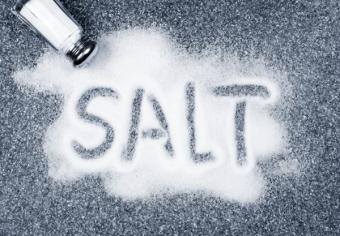Wednesday Wellness Word
How much sodium should you eat? For optimal heart-health, the American Heart Association recommends people aim to eat no more than 1,500 milligrams of sodium per day. That level is associated with a significant reduction in blood pressure, which in turn reduces the risk of heart disease and stroke.
Because the average American’s sodium intake is so excessive, even cutting back to no more than 2,400 milligrams a day will significantly improve blood pressure and heart health.
More than 75 percent of the sodium Americans eat comes from some processed, prepackaged and restaurant foods – not from the salt shaker.
Here are the approximate amounts of sodium in a given amount of table salt:
- 1/4 teaspoon salt = 575 mg sodium
- 1/2 teaspoon salt = 1,150 mg sodium
- 3/4 teaspoon salt = 1,725 mg sodium
- 1 teaspoon salt = 2,300 mg sodium
How can I tell how much sodium I'm eating?
You can find the amount of sodium in your food by looking at the Nutrition Facts Label. The amount of sodium per serving is listed in milligrams, abbreviated “mg.” Check the ingredient list for words like sodium, salt and soda. The total sodium shown on the Nutrition Facts label includes the sodium from salt, plus the sodium from any other sodium-containing ingredient in the product (for example, ingredients like sodium nitrate, sodium citrate, monosodium glutamate [MSG], or sodium benzoate).
Remember to take note of the serving size on the Nutrition Facts label. If your portion size equals two servings of a product, you’re actually eating double the sodium listed.


